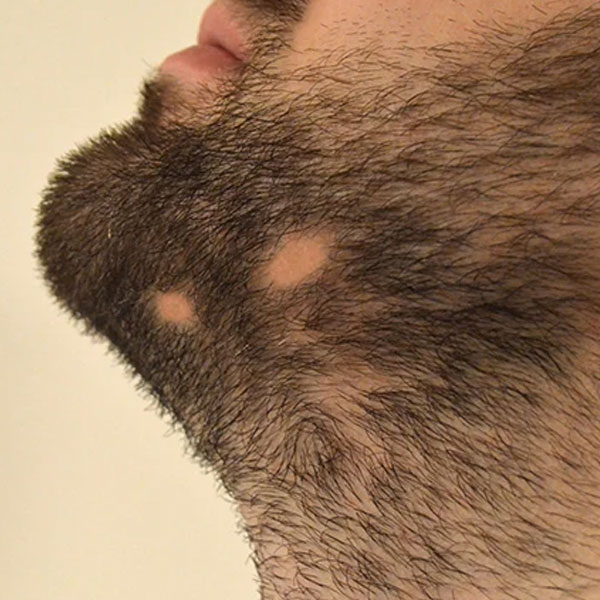Alopecia Areata Barbae
Alopecia Areata Barbae: Understanding Beard Hair Loss
Living with Alopecia Barbae can be emotionally challenging for many individuals. The appearance of patchy beard hair loss may affect self-image and confidence, leading to feelings of self-consciousness and frustration. In some cases, individuals may experience social discomfort or anxiety about their appearance.
Seeking support from friends, family, or mental health professionals can be beneficial for coping with the emotional impact of Alopecia Barbae. Talking openly about feelings and concerns related to the condition can help reduce feelings of isolation and provide emotional support.
Exploring different coping strategies, such as practicing relaxation techniques, engaging in hobbies or activities that bring joy, and maintaining a healthy lifestyle, may also help manage stress and improve overall well-being.
Causes of Alopecia Areata Barbae
Alopecia areata barbae, commonly known as beard alopecia, is a type of hair loss that specifically affects the beard area. The exact cause of alopecia areata barbae is not fully understood, but it is believed to be an autoimmune condition. In autoimmune diseases, the body's immune system mistakenly attacks its own cells, including hair follicles in the case of alopecia areata barbae.
Genetic predisposition is also considered a factor in the development of alopecia areata barbae. Individuals with a family history of autoimmune diseases or alopecia areata may have a higher risk of developing beard alopecia.
Other potential triggers for alopecia areata barbae include stress, hormonal changes, infections, and environmental factors, although the precise mechanisms by which these factors contribute to the condition are not well-defined.
Overall, alopecia areata barbae is likely caused by a combination of genetic, autoimmune, and environmental factors. Further research is needed to fully understand the underlying causes of this condition and to develop more effective treatments.
Symptoms of Alopecia Areata Barbae include:
The symptoms of Alopecia Areata Barbae typically manifest as patches of hair loss in the beard area. These patches are usually round or oval-shaped and may vary in size. The skin in the affected areas is typically smooth and may appear normal or slightly reddened.
- Sudden onset of bald patches on the beard or facial hair.
- Smooth, hairless patches that may vary in size.
- Possible itching or discomfort in the affected areas.
Treatment options for Alopecia Areata Barbae include:
It's important for individuals with Alopecia Areata Barbae to consult with a dermatologist or healthcare professional to determine the most appropriate treatment plan based on their specific condition and medical history. Additionally, support groups and counseling may be beneficial for coping with the emotional impact of hair loss.
- Corticosteroid injections: Injecting corticosteroids into the affected areas can help suppress the immune response and promote hair regrowth.
- Topical corticosteroids: Corticosteroid creams or ointments applied directly to the bald patches may help reduce inflammation and stimulate hair growth.
- Topical immunotherapy: This involves applying chemicals such as diphencyprone (DPCP) or squaric acid dibutyl ester (SADBE) to the skin to provoke an allergic reaction, which can help stimulate hair regrowth.
- Minoxidil: Topical minoxidil solution may promote hair regrowth in some cases of Alopecia Areata Barbae.
- Oral medications: In severe cases, oral medications such as corticosteroids or immunosuppressants may be prescribed to suppress the immune response.
Benefits of Our Approach:
- Natural Regrowth: Our herbal treatments stimulate natural hair regrowth by addressing the underlying causes of Androgenic Alopecia.
- No Side Effects: Unlike some pharmaceutical treatments, our herbal solutions are gentle and free from harmful side effects.
- Comprehensive Care: We focus on overall wellness, considering factors beyond just hair loss to promote long-term health.
Realated Products

Scalphia Shampoo

Scalphia Hair Oil

Scalphia Herbal Serum



What is Androgenic Alopecia?
What is Alopecia Areata Barbae?
What causes Alopecia Areata Barbae?
What are the symptoms of Alopecia Areata Barbae?
Is Alopecia Areata Barbae contagious?
How is Alopecia Areata Barbae diagnosed?
Can Alopecia Areata Barbae be treated?